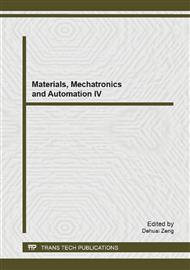p.283
p.288
p.293
p.298
p.306
p.314
p.321
p.327
p.333
Ultrasonic Tomographic Velocity Field Imaging Based on Interlaced Chord Network
Abstract:
Ultrasonic velocity tomography is a novel technique for velocity field measurement with the advantages of being non-invasive and insensitive to fluid properties. But its application is limited by poor spatial resolution. Thus, a novel ultrasonic velocity tomography method based on an interlaced chord network is proposed in this paper. To form the interlaced chord network, transducers are installed at two mounting planes of the pipe with N transducers on each plane, and 2×N transducers are equally spaced along the pipe circumference. In particular, N is selected to be an odd number to avoid blind zone. The average velocity on each chord is scanned in a fan-beam mode and used as projection data for velocity field reconstruction. The projection data are rearranged into a parallel beam mode and interpolated at a uniform interval. A filtered back projection algorithm is employed for 2-dimensional reconstruction of the velocity field. Numerical simulation experiments show that, the spatial resolution is improved obviously by the interlaced chord network without introducing extra transducers and 13 transducers on each mounting plane are enough for actual velocity field imaging downstream a single-bend pipe.
Info:
Periodical:
Pages:
306-313
Citation:
Online since:
June 2014
Authors:
Price:
Сopyright:
© 2014 Trans Tech Publications Ltd. All Rights Reserved
Share:
Citation:


